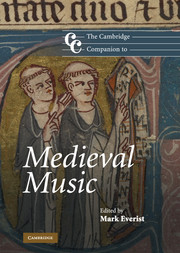10 - Music east of the Rhine
from Part II - Topography
Published online by Cambridge University Press: 28 September 2011
Summary
National historians of East Central Europe look back to the Middle Ages and early Renaissance as the glory days of their respective countries: to Bohemia-Moravia in the mid fourteenth century under Charles I/IV, King and Emperor; to Hungary in the later fifteenth century under Mátyás Corvinus; and to the Polish-Lithuanian Commonwealth in the sixteenth century under the Jagiellonian kings and their Hungarian-born successor, Stefan Batory. By 1518, the year in which Zygmunt Stary (Sigismund I) married Bona Sforza (Poland's metaphorical embrace of the Renaissance) the vast Jagiełło realm extended from the Baltic to the Black Sea (see Figure 10.1). East Central Europe, the commonly accepted designation for these countries east of the Rhine, conveys no necessary implication of shared cultural identity, although, as we shall see, the musical traditions of medieval Poland, Bohemia-Moravia and Hungary were as interrelated as their aristocratic families. Indeed, for much of the time from 1300 until well into the sixteenth century, two of these countries, and on one occasion all three of them, were ruled by the same monarch.
Powerful though these medieval states once were, their contribution is often treated as peripheral to the broader narrative of European cultural history. This is particularly so in the case of music historiography, which gives short shrift to music east of the Rhine. Factors contributing to this state of affairs are the relatively small amount and inaccessibility of much of the source material, the lack of a synoptic coverage in a western European language, and a teleological view of music history that privileges polyphonic repertoires over monophonic.
- Type
- Chapter
- Information
- The Cambridge Companion to Medieval Music , pp. 171 - 182Publisher: Cambridge University PressPrint publication year: 2011
- 1
- Cited by



